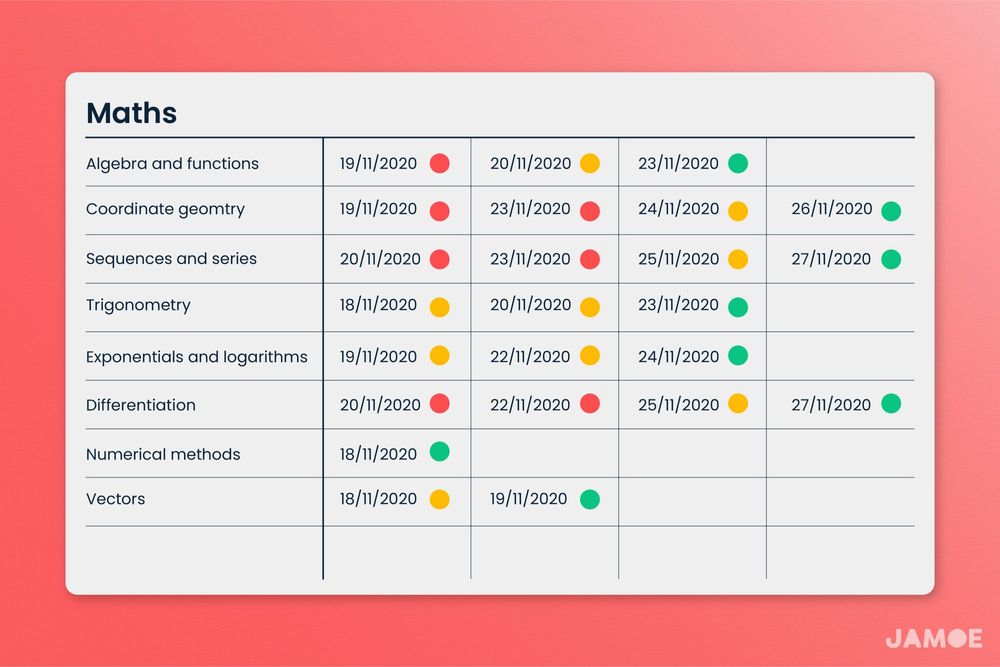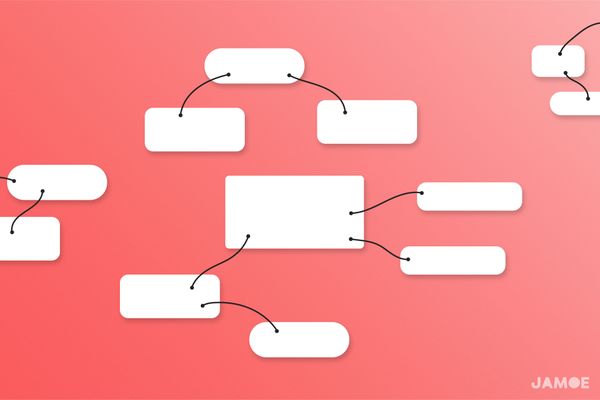Using Retrospective Revision Timetables
At a glance
- Based on the reader question: What's the best way to track and prioritise my revision when learning a new topic? - Edith, UK
- Avoid the pitfall of being ‘All plan and no action’ by measuring what you have done rather than what you aspire to get done.
- Refocus your revision to prioritise understanding the answers rather than just recognising them. Taking this approach will make your revision more efficient by giving you an honest view of how you're progressing.
What is a Retrospective Revision Timetable?
True to its name, a Retrospective Revision Timetable looks backwards instead of forwards.
Its power comes from forcing you to focus on how to build upon your existing strengths and weaknesses.
With a glance, you can see where you’ve applied effort and whether your mastery is high, medium, or low. You can then prioritise your day by focusing on what matters.
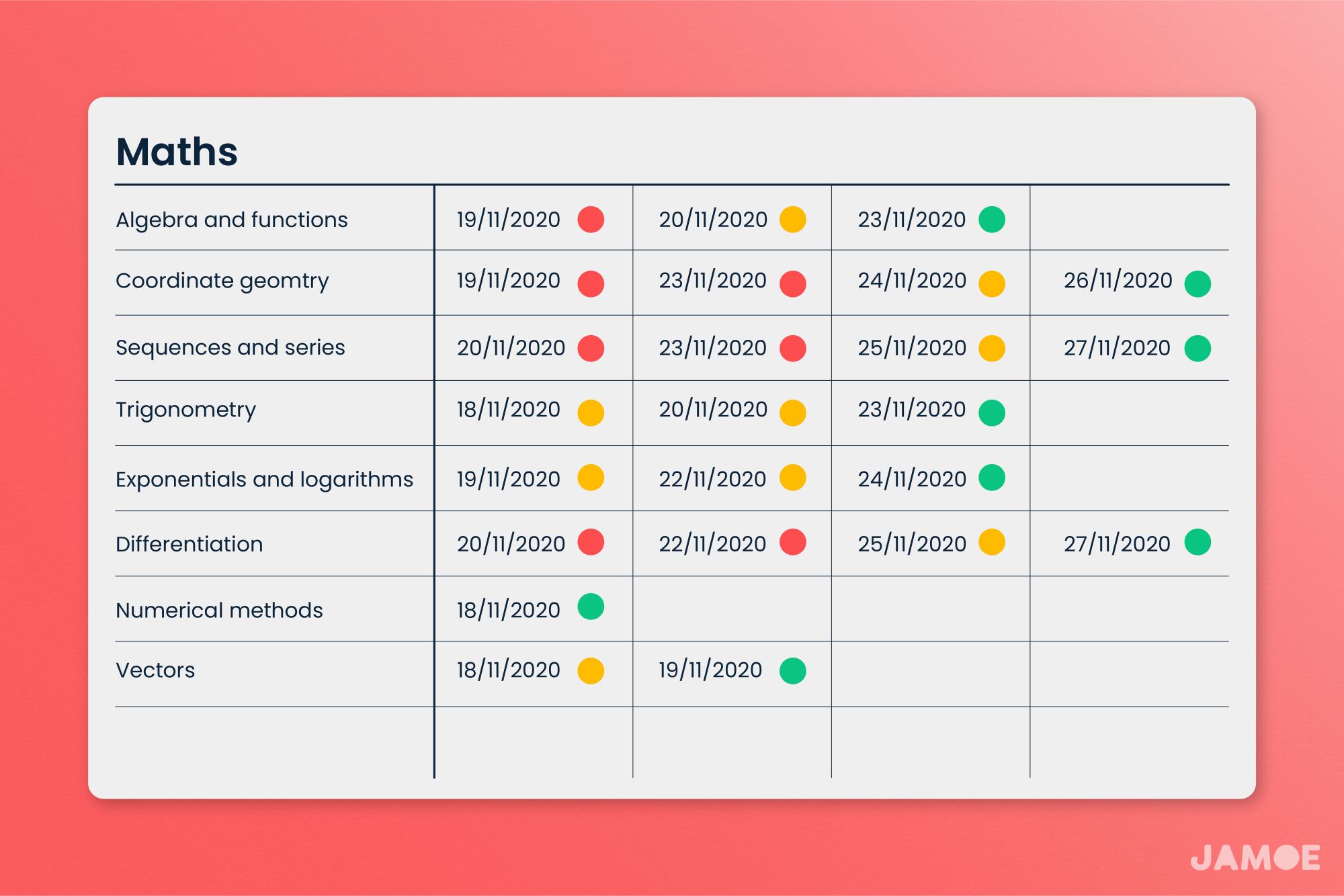
Despite having little context about Retrospective Revision Timetables, you’ve probably intuited the following from the one above:
- The traffic light colouring told you which topics are strengths or weaknesses;
- The blank rows showed you the topics that need more attention;
- The well-populated rows signalled that these topics have been revised extensively.
Based on that, you’ve probably thought:
- This person should revise Trigonometry some more, and;
- This person should pause revising Numerical Methods and Vectors.
That’s the magic. You don’t have to waste time thinking about what to do.
Instead, you can glance at your table and focus on doing what matters.
How Do I Create a Retrospective Revision Timetable?
- Choose a subject you want to revise
- Create a sheet or page dedicated to that subject
- List all the sub-topics for that subject, e.g. for Chemistry you could add Atomic Structure, Thermodynamics, Acids and Bases, etc.
That is the skeleton of your Retrospective Revision Timetable.
Now you’re ready to start using it.
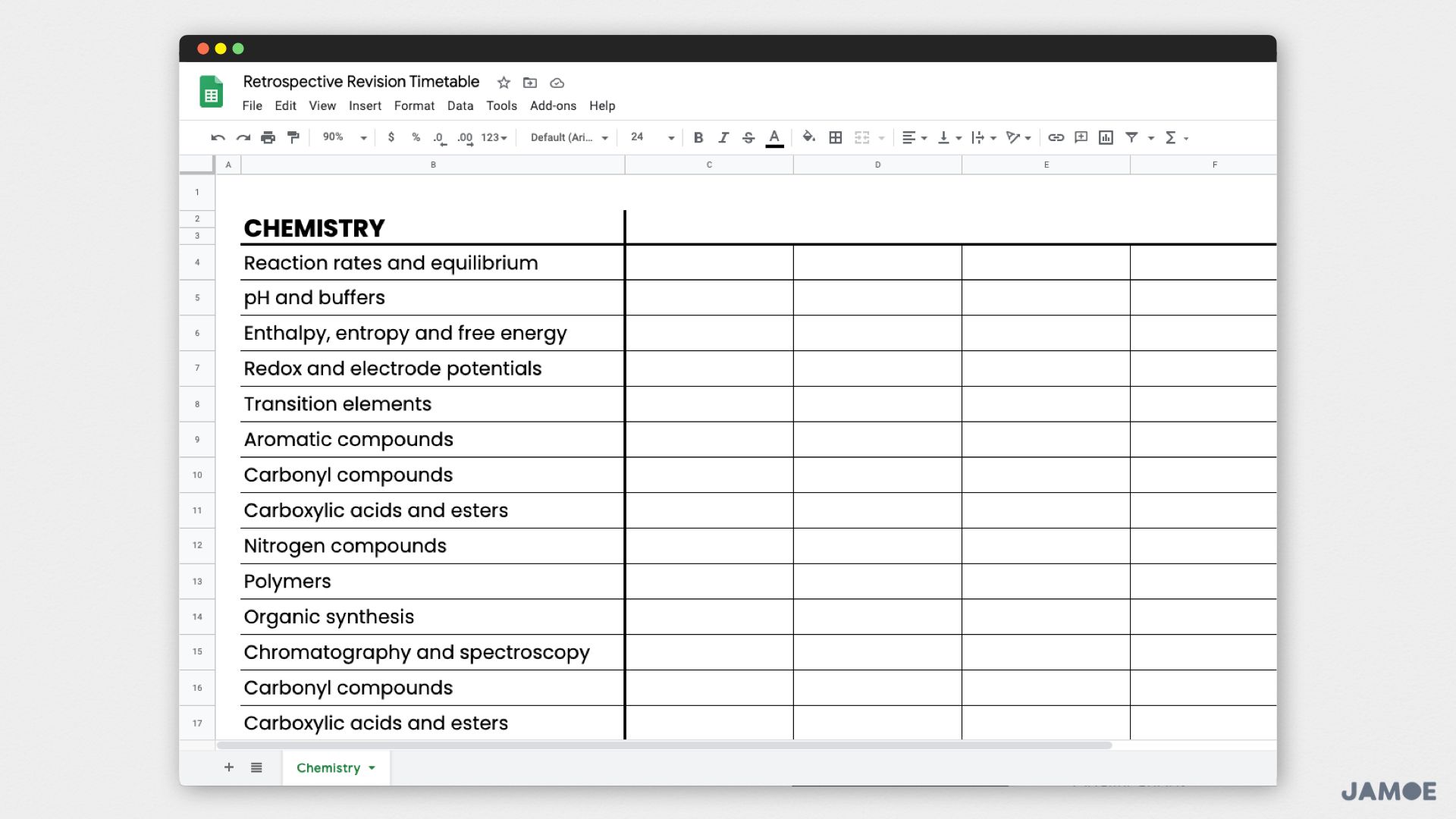
Note: I would recommend you pick one subject to begin with. That way, if you like this approach, you’ll have ironed out any kinks before applying it to all your subjects.
How Do I Use the Retrospective Revision Timetable?
When you revise one of your topics, you should mark it on your timetable in two ways:
- Add the date you revised the topic
- Add whether your understanding of the topic was high, medium, or low using green, yellow, and red, respectively. These colours are a quick visual breakdown of your comprehension and confidence
What Counts as “Revision”?
Reading your notes does not count as revision. It’s too casual.
You must be applying your knowledge in some way, as that application will strengthen your understanding. It’s akin to the phrase, ‘Use it or lose it”.
This application-centric style of revising is far more effective, and is called Active Recall.
Active Recall Revision Exercises to Embrace
A few examples of active recall revision activities that would merit marking a revision session in your Retrospective Revision Timetable are:
- Writing an essay or essay plan
- Completing a past paper
- Mind mapping the connections between topics
- Solving a problem sheet
- Reviewing question and answer flashcards on the topic
- Teaching someone else the topic
Each of these examples requires you to recall and apply facts, information, and arguments.
Doing this moves you from recognising the answer to understanding the answer.
Passive Recall Revision Exercises to Avoid
These exercises make you feel good, in that, you think ‘Oh, of course, that’s the answer’.
However, when it comes to testing your understanding, you’ll realise that you’ve been cheated.
A few examples of these sort of exercises would be:
- Reading over notes
- Reviewing an old essay
- Copying out of a textbook
- Watching a lecture on the topic
Inspirational Examples
When you peek below, you’ll notice that I tweaked my Retrospective Revision Timetables in two ways.
Both include the date of the exam, which helped me make sure I was using my time mindfully.
I’ve also added Active Recall examples to keep myself honest by only logging revision sessions that prioritised applying and understanding the material. Feel free to use these as a starting point, and recast them in your own voice.
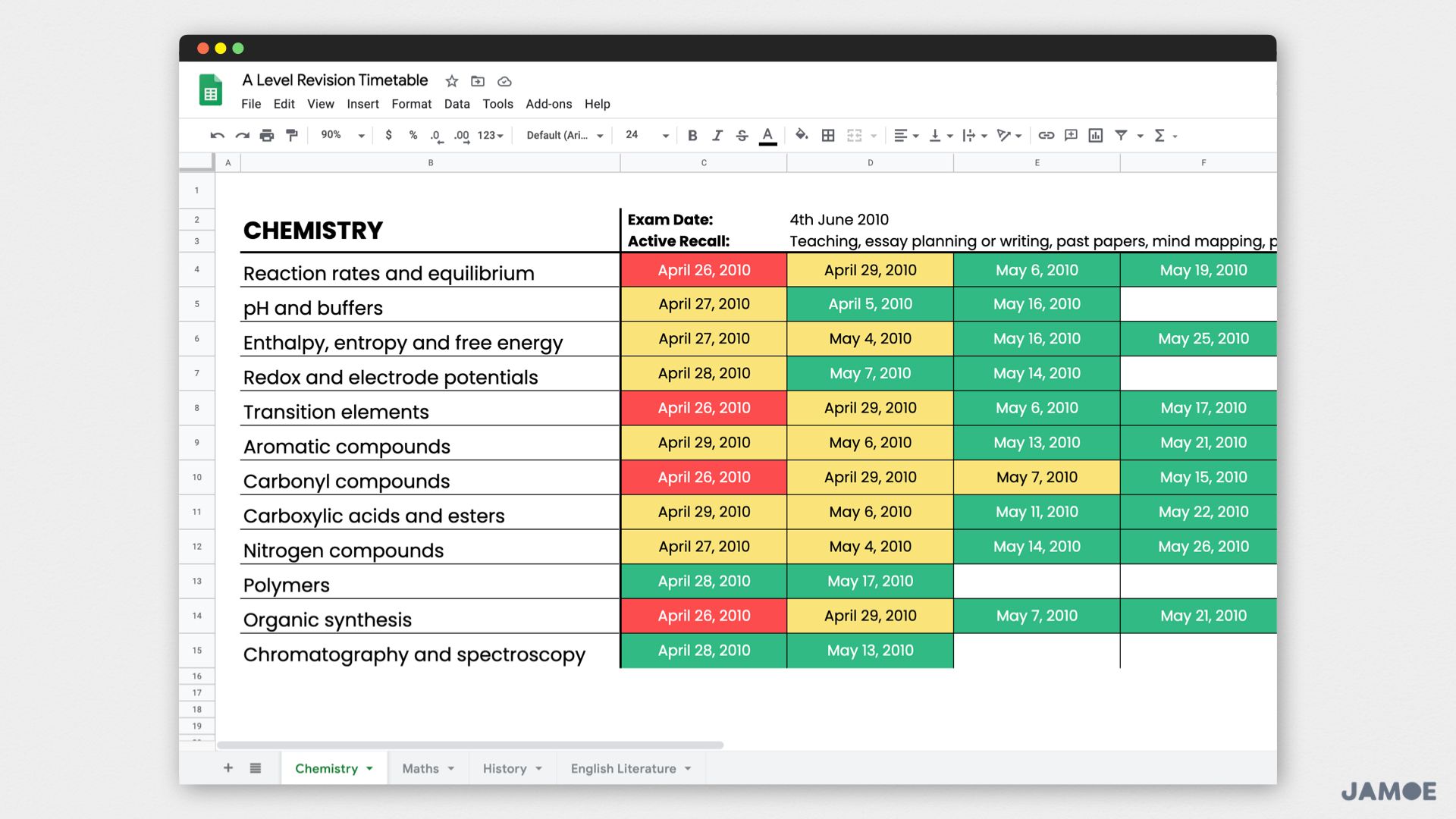
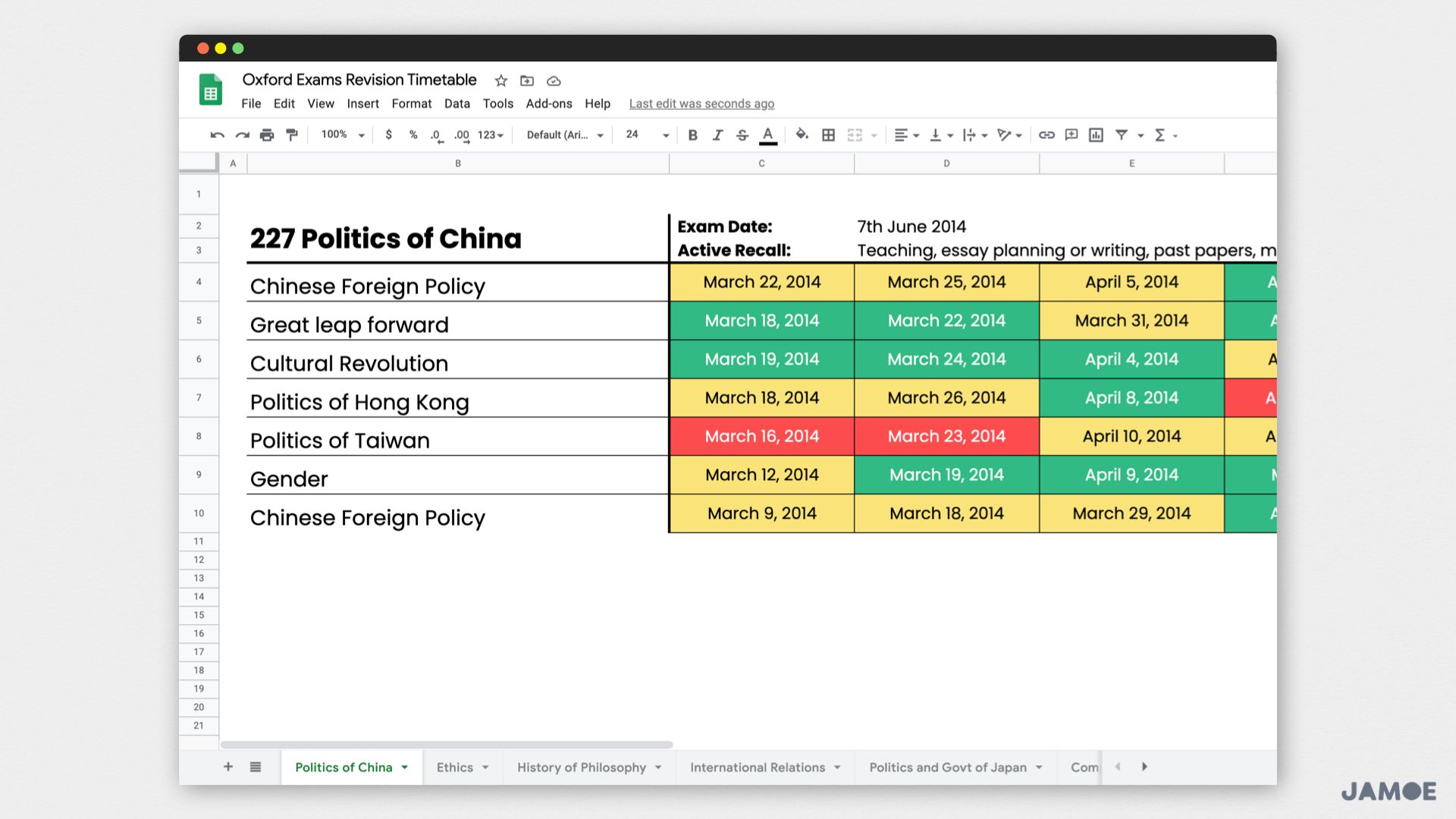
This article is part of the Redraft newsletter, where we answer reader questions. Submit your question here or subscribe for free.
Learn faster. Think deeper. Stress less.

